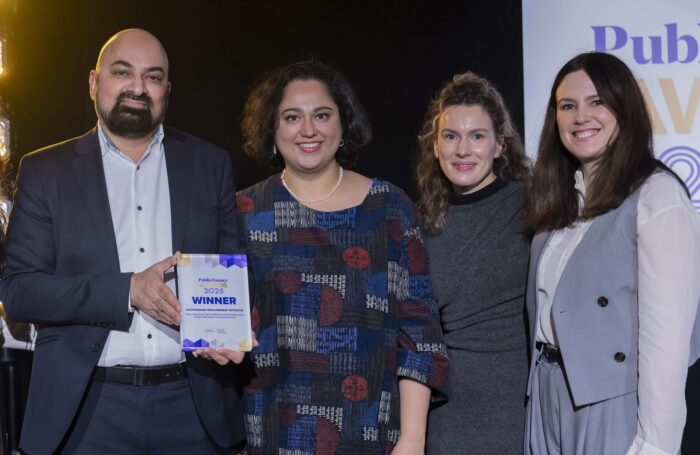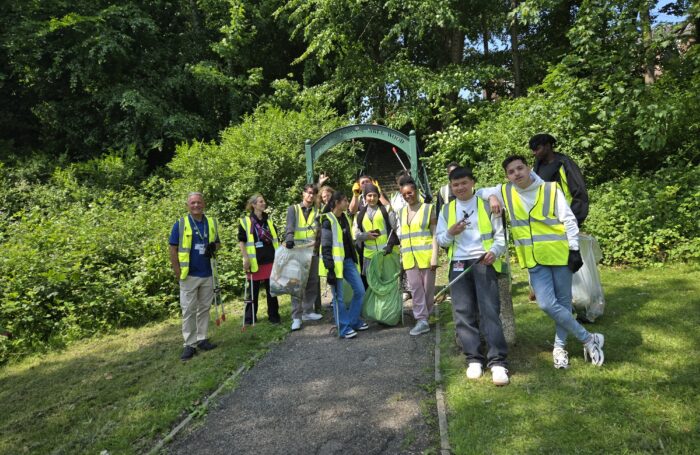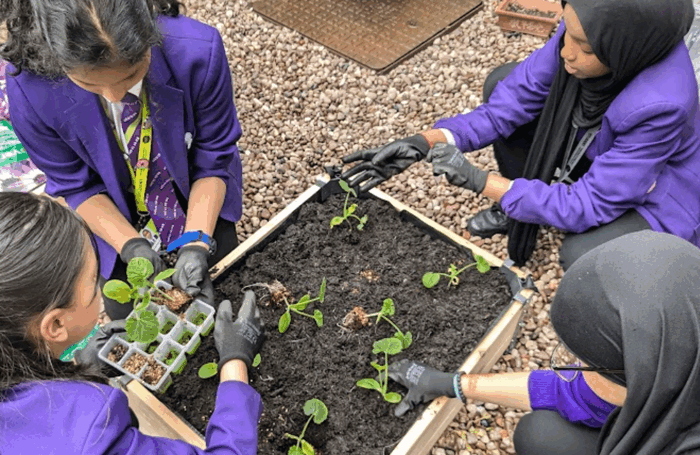Many volunteering opportunities are mainly on hold due to COVID – are there any websites/resources the panel would recommend we head to for volunteering opportunities that are still taking place?
A list of volunteering opportunities can be found at: https://naturegreatermanchester.co.uk/get-involved/. This is not an exhaustive list – other opportunities, for example in local parks, will be available as well.
What steps can we take to reduce peat sales in garden centres? can we put extra levy on peat based compost?
Lancashire Wildlife Trust is calling for consumers to go peat-free at home, voting with their feet (or their online shopping baskets) and only buying peat-free composts, plants that have been grown in peat-free and turf that hasn’t been grown on peat soils. A complete phasing out of the use of peat in horticulture has been promised by 2030, but by this time it may be too late for many of our remaining peatlands, so consumer pressure is vital.
What are Unitied Utilities and the Environment Agency considering doing about microplastic and PAH pollution from road runoff across Greater Manchester? Are they planning to install treatment schemes on priority outfalls and on storm sewers that carry road runoff into the rivers?
The best overall approach to dealing with many micro pollutants is usually source control. UU & EA are not actively planning to install treatment schemes on outfalls unless they are looking to manage the wider impact of storm sewer spills such as organic pollution. Through Natural Course, United Utilities, Greater Manchester Combined Authority and the Environment Agency are jointly commissioning a comprehensive research study investigating the sources of micro plastics within Greater Manchester water courses. This study will build on research carried out by the University of Manchester in 2018 and aims to understand the pathways and sources of micro plastics to enable greater understanding of the challenge and support future decision making.
What are the panel’s thoughts on every new development having to achieve a green space factor – either by creating a bio-diverse park on half the footprint of any site or by the installation of a green roof or wall if the building takes up the full footprint?
The draft Greater Manchester Spatial Framework 2020 includes a commitment to develop standards in relation to A Greater Manchester “Green Factor”, which sets out the level of on-site green infrastructure that new developments are expected to provide so as to meet their occupants’ needs and contribute to the extent and interconnectedness of the wider network. The Green Factor will provide a baseline expectation based on the proportion of the site that is covered by different types of green infrastructure features.
On p10 of My Wild City in its 2020-2022 action plan, there’s the requirement for “Improved quality of spaces and corridors for nature in Manchester”. A precursor to improving corridor quality, must surely be their preservation?. How can I get a green corridor preserved, rather than it being cut in two, as would happen if a local horse field is built on in the Levenshulme suburb, in the way proposed. It feels like the planning approval department and the appeals process approvers haven’t read the “My Wild City” document that was commissioned by MCC. I can provide lots more detail
It is inevitable that challenging decisions around development and impacts on nature will need to be made in Manchester and the wider GM region. My Wild City has recently commissioned a Local Nature Recovery Network study for Manchester by Greater Manchester Ecology Unit to help inform the new Local Plan and identify core sites for wildlife. This study highlights that in such an urban area as Manchester, the entire wider environment of parks, gardens, pocket greenspaces, etc. needs to be improved and protected; rather than just priority sites such as SBIs, LNRs and river corridors. This study will be finalised in late 2020 and will be used to inform short and long-term actions.
Please may the delegates (particularly Mark from the EA & Sarah from UU) explain what they will do to prevent untreated raw sewage reaching our rivers so regularly and improve the health of rivers in Greater Manchester.
Due to a legacy of how the sewer systems have developed they carry a significant amount of rainwater as well as foul flows. As a result of this storm sewage overflows exist which allow for the system to relieve itself during heavy rainfall to prevent flooding of homes and businesses. The Environment Agency regulates storm overflows through permits and expects water companies, as operators of the sewer system, to maintain them to ensure compliance. As required through the EA’s Water Industry National Environment Programme UU regularly invests in improvements to overflows where they are identified as contributing to non-compliance with environmental standards or to meet environmental policy, which has led to £1.2bn being invested in the last 18 years. Recently United Utilities completed significant improvements to the River Medlock catchment and improvements are planned for the Irwell over the next 5 years. United Utilities has also recently installed widespread storm spill monitoring on its network and has a programme of work to investigate the root cause of overflow spills for those that operate frequently in order to determine if there are cost effective interventions to reduce spill frequency.
Will information from the Local Nature Recovery Network and ecological network model be used to identify if allocated developments in the GMSF will contribute to nature networks or if they would block nature networks?
Natural England is working closely with the GMCA to bring all existing evidence – including the ecological network mapping – into the LNRS. The relationship between the LNRS and GMSF will be explored through the pilot, in the context of proposed national changes to planning policy as well.
What are Peel’s thoughts (from a sustainability point of view) on Peel’s acquisition of the Over Hulton Estate and the proposal of a Ryder Cup-worthy golf course? Building on grassland and mature woodland?
Peel’s proposals for Hulton Park have been designed to deliver the restoration and enhancement of the Park through the creation of an international golf destination and community. The proposals embed a wide range of sustainability principles including: Biodiversity Net Gain of 15%; BREEAM building; new transport and community infrastructure; and an overall socioeconomic impact in excess of £1bn at UK level. The proposals would bring new life and sustainable use to an historic asset which has lost its original purpose and has been in a state of decline for nearly a century. To facilitate this, part of the Park is to be developed in order to retain and restore important historic and landscape features. The proposals have been fully scrutinised through a Public Inquiry and planning permission granted by the Inspector and Secretary of State.
Really love the new Wildbelt campaign. How can this help save one of the last remaining naturally rewilded green spaces we have left in the city Ryebank Fields in Chorlton, where 1400 trees, wildlife corridors and natural habitat including protected species are under threat of development.
As Local Planning Authority, decisions regarding this site are taken by Manchester City Council – enquiries regarding this site should be directed to them.
Regarding tree planting: Andy Burnham said in his welcome that 460,000 of the target of one million trees by 2024 had already been planted. Isn’t the more important statistic the number of planted trees that are still alive? As a walker in Greater Manchester I see hundreds of sapling protectors that no longer contain a live sapling! This may be because not enough thought went into selecting the right tree for each location. However, I suspect that it’s happening because resources aren’t being allocated to nurturing the newly planted trees. Without aftercare in the first few years of the trees’ life, mass tree planting becomes a very wasteful example of greenwash. Trees are far too important to us to let this happen.
It’s very important that we not only plant new trees but look after the ones we have. City of Trees do not only plant millions of trees – including saplings, fruit trees and street trees – but also look after our existing woodlands. They also return to our projects to undertake ‘tree-LC’ sessions with their citizen forester volunteers. A small percentage of failure is always expected but minimised with careful planting (the right tree in the right place) including species selection as well as ongoing maintenance.
On p10 of My Wild City in its 2020-2022 action plan, there’s the requirement for “Improved quality of spaces and corridors for nature in Manchester”. A precursor to improving corridor quality, must surely be their preservation. How can I get a green corridor preserved, rather than it being cut in two, as would happen if a local horse field is built on in the Levenshulme suburbs.
It is inevitable that challenging decisions around development and impacts on nature will need to be made in Manchester and the wider GM region. My Wild City has recently commissioned a Local Nature Recovery Network study for Manchester by Greater Manchester Ecology Unit to help inform the new Local Plan and identify core sites for wildlife. This study highlights that in such an urban area as Manchester, the entire wider environment of parks, gardens, pocket greenspaces, etc. needs to be improved and protected; rather than just priority sites such as SBIs, LNRs and river corridors. This study will be finalised in late 2020 and will be used to inform short and long-term actions.
Really excellent presentation by Tom Smart on Ecological Network Modelling, how does GMCA see this being used in the development of the Local Nature Recovery Strategy?
Natural England is working closely with the GMCA to bring all existing evidence – including the ecological network mapping – into the LNRS. We’re still at the relatively early stages of the project, but will be working with stakeholders on how this modelling and other evidence is brought within the LNRS.
How can partnerships such as GM Wetlands get involved in the process for piloting Local Nature Recovery Strategies?
GMCA will be communicating shortly about the pilot. We’ve already brought together a key group of stakeholders to help us take forward the project and will be engaging beyond that group over the remainder of the project.
When sampling the rivers for microplastics, do you select an area of riffles for example or a section where the flow is slowing, please? Have you shared your River Tame findings with the regulatory authorities? If so, what are they doing to reduce plastics inputs, please? And in regards of the poorly maintained overflow, have you reported this to the water company at all?
The Geography Dept at the University of Manchester provided the following response: This is a good question. Local flow conditions can certainly be an important influence on channel bed microplastic concentrations. We have sampled channel beds across a range of flow and channel bed conditions – from faster flowing reaches to low energy pools. The faster flowing reaches tend to have much lower microplastic concentrations, but we have found high concentrations across a range of bed and flow conditions. The outfall mentioned during the Green Summit presentation has been discussed with the water company.
Are NE prepared to assist volunteers with the restoration of the Manchester, Bolton & Bury Canal, the Manchester and Stockport Canal, the Hollinwood Canal and Manchester’s Underground Canal (Manchester and Salford Junction Canal)?
The Green Summit partners work with the Canal & River Trust to support the restoration of canals, wherever possible, as part of wider regeneration programmes.
Is there any indication of a change in microplastic pollution levels since 2018 and if so, is it better or worse?
Since the 2018 publication, that presented data from rivers across Greater Manchester, we have done much more detailed sampling in a single river system to better understand microplastic sources and reach-scale contamination. To answer your question directly, the situation has not improved because the fundamental processes involved in microplastic use and creation and their entry into the local rivers have not changed. There is still much work to do.
Working from the premise of “protect, maintain, enhance” what is actually being done to protect existing green space? The majority of the dialogue seems to be about enabling/encouraging development via “greening” measures. Surely the best solution for existing green space is to preserve it rather enable its development?
The draft Greater Manchester Spatial Framework 2020 includes a commitment to urban green space to ensure there is an appropriate scale, type, quality and distribution of accessible urban green space across Greater Manchester that can support a high quality of life and other important green infrastructure functions: Specifically existing urban green space will be protected and enhanced in balance with other considerations.
What about supporting the restoration of Manchester’s Underground Canal? There need be no cost to the Council or Allied London? Have you seen the feasibility study?
We have not had sight of the feasibility study which sounds interesting. Please can you send us a link.




